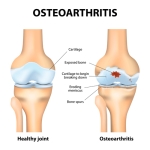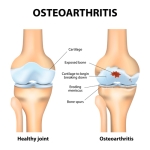Home »
Blog » Pain Management
| Stem Cell, PRP, Acupuncture in Queens & Long Island, New York
Pain Management | Stem Cell, PRP, Acupuncture in Queens & Long Island, New York
The shoulder is a highly mobile joint composed of tendons, ligaments, cartilage, and bones, all of which are prone to injury with activity and sports. People experiencing shoulder pain may be suffering from a variety of conditions such as bursitis, tendinitis, osteoarthritis, or degenerative arthritis. Shoulder pain can also be caused by sports injuries or other accidents, and those over the age of 50 are especially susceptible to developing rotator cuff tendon tears.
Read more
Back Pain is one of the most common ailments around. It is thought that roughly 80% of Americans suffer from it at some point in their lives, and it is the second most common reason for visiting the doctor. When you are experiencing it, you can find yourself unable to work and it can have a tangible effect on all aspects of life.
Read more
Are you or your loved ones suffering from lower back pain? Looking for the best treatment for lower back pain? You are not alone. You are one of the 25 million Americans who suffer from back pain. Talk about misery loves company!!! In fact, the lower back pain was the most commonly reported pain site, exceeding joint conditions, headache/migraines, neck, and facial, or jaw pain. Lower back pain and Neck pain are the leading cause of disability in most countries.
Read more
You probably heard by now that stem cells work in many challenging conditions ranging from cancer to back/joint pains. Media has many stories of athletes and celebrities getting stem cell procedures. Stem cells do hold a lot of promise. In fact, Scott Gottlieb, the FDA commissioner had this say about stem cells, “These concepts are no longer the stuff of science fiction, but rather real-life science where cells and tissues can be engineered to grow healthy, functional organs to replace diseased ones”.
Read more
Platelet-rich plasma, also known as PRP, has become increasingly popular for the treatment of orthopedic injuries and symptomatic pain that results from such injuries. By promoting a localized inflammatory response, PRP injections increase blood flow to the injured area and expedite the healing process, thereby leading to pain relief.
Read more
The average American spends around five hours per day on their phone, and for many people, this includes time spent browsing their phones while lying in bed. You may not think twice about using your phone in bed, but here are two reasons to avoid this harmful practice if you suffer from neck pain:
1. Phone use strains your neck
2. Blue light from your phone can inhibit your sleep
Read more
Diagnosing the source of your lower left back pain typically involves a process of elimination. To help you better communicate with your doctor, we are here to provide a step-by-step explanation of this process:
1. Muscle strain: The most common cause
2. Problems related to spinal structures
3. Lower left back pain from your internal organs
Read more
Stem Cell & Platelet Rich Plasma Procedures are the world’s most advanced regenerative injection treatments for treating knee pain due to arthritis, meniscus tears, traumatic ligament injuries, overuse conditions and other degenerative conditions.
Read more
While knee osteoarthritis is often a progressive and irreversible degenerative process, functional improvement and pain control are reasonable treatment goals. Earlier treatment intervention may improve the odds of preserving joint integrity and function for years - or even a lifetime - which can stave off debilitating pain and a possible need for joint replacement surgery.
Non-Surgical Treatments - Stem Cell & Platelet Rich Plasma (PRP), Physical therapy and exercise, Activity modification, Periodic rest, Warm or cold compress and Weight loss.
Read more
While no single test can definitively diagnose osteoarthritis of the knee, physicians use a comprehensive approach that is verified by diagnostic imaging to arrive at a clinical diagnosis. It is important to clarify that most individuals over age 50 will have signs of osteoarthritis in their major joints that can be seen on an x-ray, but most will have no symptoms, so the medical provider will not rely on diagnostic studies (such as an x-ray or MRI) alone. An accurate diagnosis will come following a comprehensive medical history and physical examination by the healthcare provider.
Read more
Love this Post? Spread the World






















